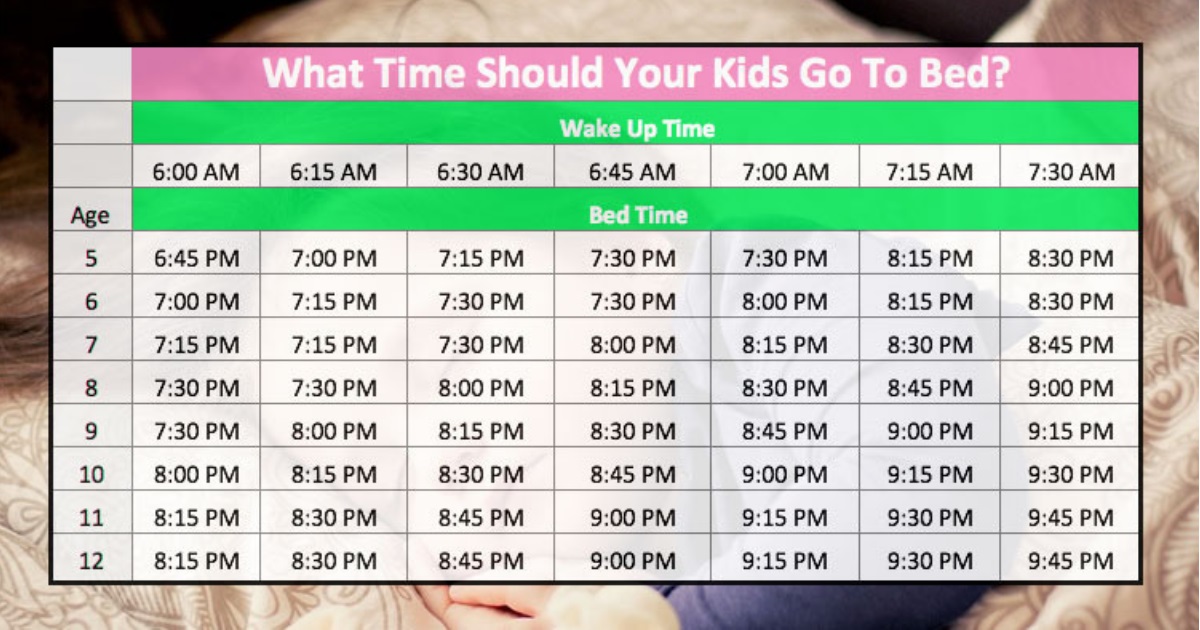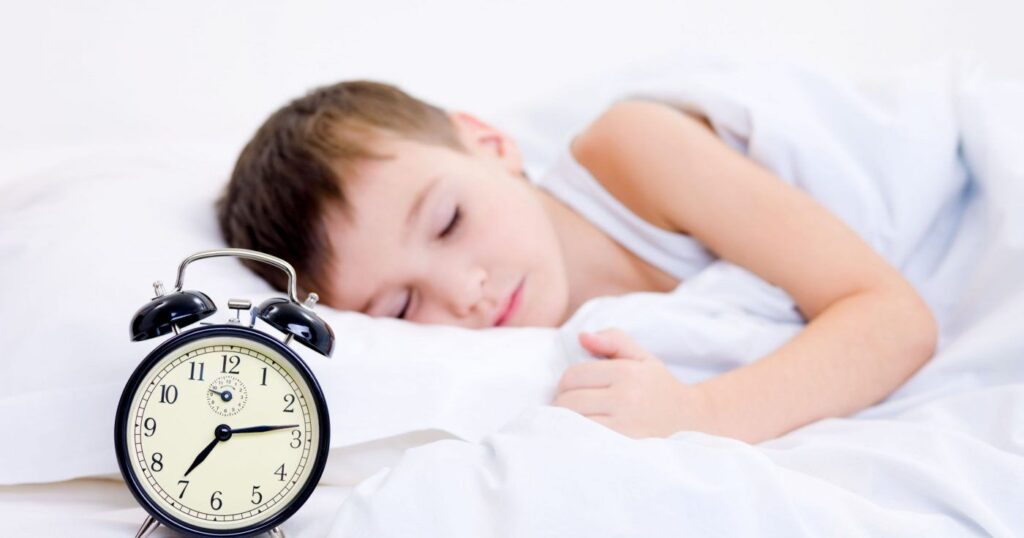This Chart Shows You When You Should Put Your Kids to Bed

As any parent knows, finding the perfect bedtime for your kids can be a real challenge. Put them to bed too early, and they may be full of energy and unable to sleep. Put them to bed too late, and they’ll wake up grumpy, struggling to make it through the day. The struggle becomes even more complicated for working parents, who want to maximize their time with their children before bedtime.
If this sounds like a dilemma you face, you’re not alone. In fact, Wilson Elementary School in Kenosha, Wisconsin, noticed that many parents were grappling with the same issue and created a helpful chart to guide them.
The Perfect Bedtime: A Helpful Chart
The chart takes into account both the age of the child and the time they need to wake up in the morning.
For example, if you have a 6-year-old who needs to be awake by 6:30 a.m., the chart suggests they should be asleep by 7:30 p.m. However, if you have an 11-year-old with the same wake-up time, they can stay up later, with a bedtime of around 8:45 p.m.
This chart is based on the American Academy of Pediatrics’ (AAP) sleep guidelines for children. According to the AAP, kids aged 3-5 need 10-13 hours of sleep per day, while children aged 6-12 typically need 9-12 hours of sleep per day to stay healthy and well-rested.
Why Bedtime Matters
It’s not just about following a set bedtime for convenience—it’s about supporting the health and development of your child. Getting the right amount of sleep has a significant impact on a child’s overall well-being. In fact, research has shown that sleep plays a crucial role in children’s physical, mental, and emotional health.
Sleep and Childhood Development
A recent study by Dr. Serene Yoong from Hunter New England Population Wallsend in New South Wales, Australia, found that young children who do not have a consistent sleep schedule are nearly twice as likely to become obese by age 11 compared to those who stick to a regular bedtime.
Sleep has a direct impact on a child’s metabolism and hunger hormones, making it essential for parents to establish healthy sleep habits early on.
Additionally, another study by Dr. Jon Quach from the Murdoch Children’s Research Institute and The University of Melbourne highlighted that children who go to sleep earlier have better overall health and a higher quality of life. Even more surprising, the study found that mothers of early-to-bed children report improved mental health and lower levels of stress.
The Benefits of Early Bedtimes

Better Rest for the Whole Family
Recent research from the Australian Sleep Association’s “Sleep Down Under 2015” conference suggests that putting your kids to bed before 8:30 p.m. doesn’t just help your child—it benefits the entire family. Earlier bedtimes lead to more restful sleep, which improves the health and productivity of everyone in the household. When children sleep well, they’re less likely to be irritable or disruptive, helping create a more peaceful home environment.
Improved Mental and Physical Health for Children
Consistent, quality sleep contributes to better concentration, emotional regulation, and even academic performance. Kids who go to bed early are also less likely to experience behavioral problems and are more physically active during the day.
The Science of Sleep and Family Health
Understanding the science behind sleep is key to managing your child’s bedtime. The brain and body undergo essential restorative processes during sleep, such as consolidating memories, replenishing energy stores, and supporting immune function. Consistent sleep patterns help children feel energized and ready to take on the day.
For parents, it’s equally important to recognize that their mental health is connected to their children’s sleep patterns. In families where kids have set bedtimes and stick to them, parents report lower stress levels and better overall well-being.
What You Can Do Today
Establishing a healthy sleep routine for your child is one of the best things you can do for their health and development. Here are a few tips to help you follow the chart and make bedtime easier for your child:
- Stick to a Consistent Schedule: Try to follow the same bedtime and wake-up time every day, even on weekends. Consistency helps your child’s body get into a rhythm, making it easier for them to fall asleep and wake up naturally.
- Create a Calming Bedtime Routine: Establishing a calming pre-sleep routine, like reading a book or taking a warm bath, signals to your child that it’s time to wind down.
- Limit Screen Time: Avoid allowing your child to use electronic devices before bedtime. The blue light emitted from screens can interfere with the production of the sleep hormone melatonin, making it harder for your child to fall asleep.
- Be Mindful of Caffeine: Avoid giving your child caffeinated drinks, particularly in the late afternoon or evening, as they can interfere with sleep quality.
- Create a Sleep-Friendly Environment: Ensure your child’s bedroom is cool, dark, and quiet. A calm environment can promote better, more restful sleep.
Conclusion
Incorporating a proper bedtime routine is essential for your child’s physical and mental health. Using the sleep chart based on age and wake-up time can help you establish the best bedtime for your child, allowing them to thrive. After all, getting enough sleep is crucial for the whole family, and it helps everyone feel more balanced and energized to take on each new day.
By sharing this information and following a set sleep schedule, you’re helping your child develop healthy habits that will last a lifetime—and improving your own well-being along the way.
